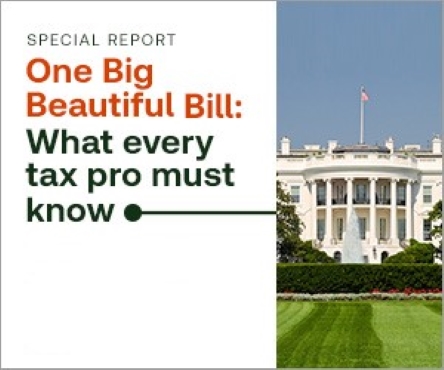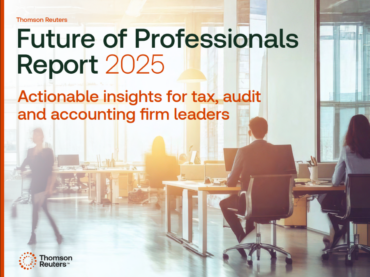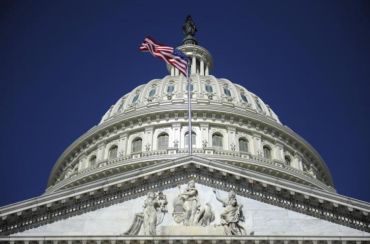As the calendar turns to the second half of 2025, the payroll landscape stands at a pivotal juncture shaped by sweeping legislative proposals, landmark Supreme Court decisions, and evolving federal agency priorities.
At the forefront is the “One Big Beautiful Bill Act,” a high-profile legislative package that could redefine payroll tax policy by permanently extending key provisions of the Tax Cuts and Jobs Act (TCJA) and introducing new exemptions for overtime pay and employee tips.
Beyond Capitol Hill, the U.S. Supreme Court has issued a series of unanimous rulings that are reshaping the legal framework for wage and hour compliance, religious tax exemptions, and workplace discrimination claims. Meanwhile, the Internal Revenue Service (IRS) and Department of Labor (DOL) are navigating leadership transitions and operational recalibrations.
Immigration and employment verification policies are also evolving. U.S. Citizenship and Immigration Services (USCIS) has updated Form I-9 and reached visa caps for both H-1B and H-2B programs, while the Equal Employment Opportunity Commission (EEOC) continues enforcement activities despite operating without a quorum.
Looking ahead, the second half of 2025 is expected to bring further clarity—or complication, depending on the fate of pending legislation and ongoing litigation. For payroll professionals, the message is clear: stay informed, stay agile, and prepare for a year-end that could look very different from how it began.

Podcast
Tax reform unpacked: What does the One Big Beautiful Bill Act mean for you?
Listen to the podcast ↗The potential impact of the “One Big Beautiful Bill” on payroll in 2025
The “One Big Beautiful Bill Act” (House Bill 1) is currently progressing through Congress and carries potentially significant implications for employers and payroll professionals. Key provisions include the permanent extension of select elements from the Tax Cuts and Jobs Act (TCJA), as well as the implementation of campaign promises from the Trump Administration, most notably, proposals to eliminate federal income tax on overtime pay and employee tips.
These changes could reshape payroll processing and tax reporting requirements, making it essential for employers to stay informed and prepare for potential adjustments.
Currently, the modified federal income tax brackets, which lowered rates across most income levels, and the retention of the higher standard deduction and suspension of personal exemptions, are set to expire at the end of 2025. These changes affected how withholding is calculated on Form W-4 and how employers apply the IRS’s Publication 15-T to determine federal income tax withholding.
If these TCJA-related provisions are extended indefinitely under the “One Big Beautiful Bill,” employers and payroll professionals could benefit from greater year-end stability, avoiding the uncertainty of whether the IRS will revert Form W-4 and Publication 15-T to pre-2020 withholding calculations. This continuity could help to simplify tax planning and reduce the administrative burden of adapting to frequent regulatory changes.
However, the proposed exemption of overtime pay and tips from federal income tax may introduce new complexities. Payroll systems would need to be reconfigured to accurately exclude these earnings from withholding calculations, and employers may need to reassess employee classifications under the Fair Labor Standards Act (FLSA) to determine eligibility for overtime, adding another layer of compliance responsibility.
SCOTUS and payroll
Hurdle lowered for employers in FLSA exemption cases. In a unanimous decision issued in January, the U.S. Supreme Court (SCOTUS) ruled that employers only need to prove by a “preponderance of the evidence”—the standard burden in civil cases—that a worker is exempt from overtime protections under the Fair Labor Standards Act (FLSA). This decision overturns a prior 4th Circuit ruling that had required a higher “clear and convincing evidence” standard in a case involving grocery distributor EMD Sales.
The ruling simplifies the legal threshold for employers defending against wage and hour lawsuits, including class actions, by aligning the FLSA with the standard burden of proof used in most civil litigation. However, it does not change the criteria for exemptions themselves, such as those for outside sales employees.
Administrative exemption test left unchanged. In March, SCOTUS declined to review a case involving the FLSA overtime exemption for administrative employees, leaving in place a First Circuit ruling that applied a “relational analysis” to determine exemption eligibility. This approach evaluates whether an employee’s primary duties align with the employer’s overall business purpose.
The case stemmed from a Department of Labor (DOL) lawsuit against F.W. Webb, which classified over 600 inside sales representatives as exempt from overtime. The company argued that the First Circuit’s analysis conflicted with federal regulations and other court rulings by focusing too heavily on the employer’s business objectives.
By denying the petition, SCOTUS effectively upheld the First Circuit’s interpretation, signaling that courts may continue to use relational analysis in exemption cases.
Differential pay eligibility for reservists during national emergencies clarified. In a ruling for federal employers, SCOTUS held that federal civilian employees who are military reservists are entitled to differential pay if they are called to active duty during a declared national emergency—regardless of whether their service is directly related to that emergency.
The May decision in Feliciano v. Department of Transportation overturned a prior Federal Circuit ruling that required a substantive connection between the reservist’s duties and the emergency. SCOTUS emphasized that the statutory language only requires a temporal overlap, providing clearer guidance for agencies and payroll professionals administering differential pay under 5 U.S.C. § 5538.
Catholic Charities entitled to state unemployment tax exemption. In a unanimous decision on June 5, SCOTUS ruled that Wisconsin violated the First Amendment by denying Catholic Charities Bureau a state unemployment tax exemption based on its religious practices. The Court found that the state’s interpretation of the “religious purposes” exemption improperly favored certain theological approaches—such as proselytizing or serving only co-religionists—over others.
Writing for the Court, Justice Sotomayor emphasized that eligibility for religious exemptions cannot hinge on doctrinal distinctions. The ruling in Catholic Charities Bureau, Inc. v. Wisconsin Labor & Industry Review Commission clarifies that religious organizations cannot be penalized for how they choose to express their faith through charitable work, and it may influence how similar exemptions are applied in over 40 states with comparable laws.
Playing field leveled for majority-group discrimination claims. In another unanimous decision issued on June 5, SCOTUS ruled that employees from majority groups are entitled to the same legal standard as others when bringing discrimination claims under Title VII of the Civil Rights Act. The case, Ames v. Ohio Department of Youth Services, overturned a Sixth Circuit rule that required majority-group plaintiffs to show “background circumstances” suggesting their employer was unusually likely to discriminate against them.
SCOTUS held that Title VII’s protections apply equally to all individuals and that imposing a higher burden on majority-group plaintiffs contradicts the statute’s plain language and established legal framework. This decision reinforces that all employees, regardless of group status, must be evaluated under the same standard when alleging workplace discrimination.
IRS changes and challenges in 2025
New leadership. The Internal Revenue Service (IRS) has a new leader at the helm. Following his nomination in March 2025, former Missouri Congressman Billy Long has been confirmed by the Senate as the agency’s new commissioner in a 53-44 vote on June 12. Long becomes the sixth individual to lead the IRS this year, succeeding Danny Werfel, who stepped down prior to President Trump’s return to office.
Information return update. A representative from the IRS E-File Services Division highlighted the growing success of the Information Return Intake System (IRIS), which had received more than 136 million records as of early June 2025, dramatically surpassing the 12.4 million total submitted in the previous year.
IRIS is used to file information returns such as Form 1099-NEC (Nonemployee Compensation) and is set to fully replace the IRS’s legacy Filing Information Returns Electronically (FIRE) system beginning in tax year 2027.
Note: If the “One Big Beautiful Bill Act” is signed into law, the reporting threshold for forms like 1099-NEC would increase from $600 to $2,000.
Several new forms were added to IRIS for the current tax year, including Form 1042-S (Foreign Person’s U.S. Source Income Subject to Withholding), Form 1099-DA (Digital Assets), and Form 5498-QA (ABLE Account Contributions, Rollovers, and Transfers).
 |
|
ERC claims backlog remains
The IRS continues to face significant challenges in processing pandemic-era Employee Retention Credit (ERC) claims. As of April 2025, more than 500,000 claims remained unprocessed, despite the April 15 deadline for submissions having passed. In a May 8 blog post, the National Taxpayer Advocate (NTA) highlighted the severity of the backlog and raised concerns about widespread fraud associated with the program.
The NTA called on the IRS to prioritize hardship cases, implement a streamlined Fast Track Appeals process, and commit to resolving all outstanding ERC claims by the end of 2025.
Less funding. The IRS may need to brace for leaner times ahead. On June 4, the Treasury Department released its proposed budget for the upcoming fiscal year, requesting more than 20% less than the amount previously appropriated by Congress. The proposal also includes further rescissions from remaining funds allocated under the Inflation Reduction Act—signaling a continued shift away from the agency’s recent funding surge and 10-year strategic operating plan.
Section 530 relief changes
Payroll-related guidance from the IRS has remained generally sparse this year. However, a revenue ruling and procedure issued in January 2025 update and supersede previous guidance regarding Section 530 of the Revenue Act of 1978.
Revenue Ruling 2025-03 outlines how Section 530 applies in various factual scenarios, including the use of reduced tax rates under Code Sec. 3509 and the issuance of employment tax determinations under Code Sec. 7436.
Meanwhile, Revenue Procedure 2025-10 replaces the longstanding Revenue Procedure 85-18, refining the definition of an employee, the filing requirements for Section 530 relief, and the reasonable basis safe harbor. It also expands the interpretation of what it means to “treat” a worker as an employee and incorporates statutory updates to Section 530.
Labor Department direction
New leadership pressed by Congress. The U.S. Department of Labor (DOL), like the IRS, experienced notable leadership changes in 2025, beginning with the confirmation of Labor Secretary Lori Chavez-DeRemer on March 10. During a House committee hearing in early June, Chavez-DeRemer faced pointed questions on key issues, including overtime protections, wage theft, and proposed budget cuts to the DOL.
When pressed about the status of overtime protections for salaried workers—particularly in light of the DOL’s 2024 overtime rule being partially vacated and currently stalled in litigation—she declined to comment in detail, noting that the 2019 overtime threshold remains in effect pending the outcome of the legal process.
On the topic of raising the federal minimum wage, Chavez-DeRemer emphasized that such action falls under Congress’s authority, but reaffirmed the DOL’s commitment to safeguarding workers’ rights, wages, and benefits.
Note: On June 10, Senators Josh Hawley (R-MO) and Peter Welch (D-VT) proposed legislation that would raise the federal minimum wage from $7.25 per hour to $15 per hour starting January 2026.
Worker classification
The back-and-forth over worker classification rules continues to unfold across successive administrations. In 2025, the Department of Labor (DOL) announced that investigators within the Wage and Hour Division (WHD) have been directed not to apply the employment status analysis outlined in the 2024 final rule under the FLSA in current enforcement actions.
The 2024 rule, introduced during the Biden Administration, has faced legal challenges in federal court, prompting the DOL to reconsider its implementation. In the interim, the agency has instructed investigators to rely instead on long-standing guidance, including Fact Sheet #13 and the reinstated Opinion Letter FLSA2019-6, rather than the contested 2024 framework.
Opinion letter program launch
In an early June announcement, the DOL relaunched its opinion letter program across five enforcement agencies to provide workers, employers, and other stakeholders with expanded compliance assistance. WHD opinion letters are written to provide guidance on topics such as overtime pay, independent contractor status, and leave eligibility, and to clarify unclear application of existing regulations.
USCIS announces I-9, E-Verify changes, and visa caps
Webinars for E-Verify and I-9. To kick off 2025, U.S. Citizenship and Immigration Services (USCIS) announced a series of webinars focused on E-Verify and Form I-9 (Employment Eligibility Verification).
These sessions cover a wide range of topics, including Form I-9 document requirements, guidance for existing and web services users, an overview of the E-Verify system, employee rights, employer responsibilities, E-Verify requirements for federal contractors, and features of the myE-Verify portal.
Form I-9 changes. In April, the agency introduced minor updates to Form I-9 to align with statutory language and enhance privacy disclosures. The revised form, dated January 20, 2025, and valid through May 31, 2027, includes changes such as renaming the fourth citizenship checkbox in Section 1 to “An alien authorized to work,” updating descriptions of two List B documents, and revising the DHS Privacy Notice.
These updates are reflected in E-Verify and E-Verify+ systems as of April 3, 2025, requiring employers to use the new terminology when creating cases. While older editions of the form remain valid until their expiration dates, web services developers are encouraged to update their platforms to ensure consistency with the revised language.
H-1B and H-2B visa caps reached. As of spring 2025, the USCIS announced that the caps for both the H-1B and H-2B visa programs have been reached. The H-1B cap for fiscal year 2026 was met following the completion of the registration process on April 2, 2025. Similarly, the cap for additional returning worker H-2B visas for the second half of fiscal year 2025 was reached by April 28, 2025.
EEOC quorum and EEO-1 report
Operating without a quorum. At the start of 2025, the Equal Employment Opportunity Commission (EEOC) confirmed that it remains fully operational and continues to enforce federal anti-discrimination laws, despite undergoing leadership changes and operating without a quorum.
The agency has been functioning without a quorum since January 28, 2025, following the departure of two commissioners, leaving only Acting Chair Andrea Lucas (Republican) and Commissioner Kalpana Kotagal (Democrat) on the five-member panel.
While the lack of quorum limits the EEOC’s ability to engage in rulemaking, issue new policies, or rescind existing guidance, it does not affect its core enforcement functions.
2024 EEO-1 report. The deadline for submitting the 2024 EEO-1 Component 1 report was June 24, 2025, and the EEOC has made it clear that no extensions will be granted. After that date, the EEOC no longer accepts reports for the 2024 cycle, and employers that fail to file by the deadline will be considered out of compliance with federal reporting requirements.
The EEO-1 Component 1 report is mandatory for private employers with 100 or more employees and for federal contractors with 50 or more employees who meet specific criteria. To ensure accurate and complete submissions, employers are strongly encouraged to consult the 2024 EEO-1 Component 1 Instruction Booklet, available on the EEOC’s official EEO-1 website.

The Act of 2025
Keep your firm ahead of the curve. Our 55-page special report provides the authoritative analysis you need.
Get the report ↗Best practices for payroll in the second half of 2025
By maintaining awareness of ongoing developments, ensuring systems are adaptable, and reinforcing compliance practices, employers and payroll professionals can better prepare for the remainder of 2025. The following strategies may help organizations respond effectively to the evolving legislative, regulatory, and judicial landscape:
- Monitor legislative developments closely
Track the progress of the “One Big Beautiful Bill Act” and related tax legislation. Engage with industry associations, subscribe to IRS and DOL updates, and consult legal counsel to understand how potential changes may affect your payroll systems and employee communications. - Audit and update payroll systems
Prepare for possible changes to withholding rules, especially if overtime and tips become tax-exempt. Ensure your payroll software can accommodate new calculations and reporting thresholds, and coordinate with vendors to implement timely updates. - Reassess worker classifications
With shifting guidance from the DOL and recent court rulings, now is a good time to review employee classifications under the FLSA. Ensure that exemption determinations are well-documented and aligned with current legal standards, including the “relational analysis” approach upheld by SCOTUS. - Strengthen compliance documentation
Maintain thorough records for wage and hour practices, differential pay eligibility, and independent contractor determinations. This is especially important in light of the IRS’s updated Section 530 guidance and the DOL’s evolving enforcement posture. - Prepare for year-end reporting changes
Familiarize yourself with the expanded use of the IRS’s IRIS system and the new forms introduced for 2025. Begin transitioning away from the legacy FIRE system and ensure your team is trained on the latest electronic filing requirements. - Engage in scenario planning
Develop contingency plans for multiple legislative outcomes. Consider how different scenarios—such as the passage, delay, or failure of H.R. 1—could impact your year-end processes, employee communications, and 2026 budgeting. - Invest in training and communication
Keep payroll and HR teams informed of regulatory changes and best practices. Provide clear, timely updates to employees about how changes may affect their pay, benefits, and tax obligations. - Leverage compliance resources
Take advantage of newly relaunched DOL opinion letters, IRS publications, and USCIS webinars. These tools can provide valuable guidance and help reduce the risk of noncompliance.
 |
|











